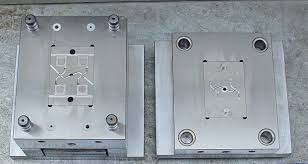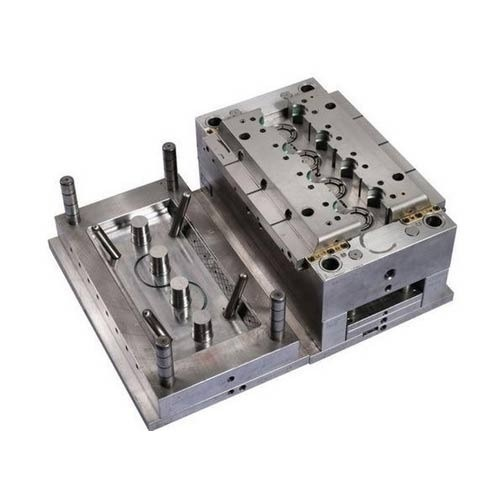Insert and over-molding are two common techniques used in plastic injection molding. Insert molding involves placing metal or plastic components (inserts) into the mold before the injection process. The molten plastic is then injected around the insert, creating a strong bond between the two materials. Over-molding, on the other hand, involves molding one material over another material already in place. This technique is often used to create soft-touch grips or to add branding or decorative elements to a product. Both techniques require precision tooling and expertise in the injection molding process to ensure high-quality results.
Insert molding and over-molding can produce high-precision plastic products

Today manufacturers are increasingly using several types of injection molding techniques that add further capabilities to this highly versatile technology. But amongst all these types, insert and over-mold techniques are the two most popular injection molding methods.
Moreover, both of these techniques have become one of the most widely preferred processes for manufacturing extremely precise parts. But what exactly are they? For what purpose are they used?
Moreover, what is the difference between insert molding and over-molding? What is mold in injection molding? As well as which material is best for making a mold? This article will explore all the important things that you really want to know.
So, let's dive in!
What is a mold insert?
The mold inserts or insert molding is actually a very beneficial technique of injection molding in which molders insert the metal part into the mold prior to the factual injection molding. Moreover, insert molding involves encapsulating a product in molded plastic.
Basically, it is quite a faster process as you can mold the two plastic materials at the same time.
The insert is precisely positioned inside the mold either manually or by a robotic arm. The mold then closes and plastic is molded over the insert, creating a single part. So, insert molding is the process of molding thermoplastic material around a preformed component.
It has performed to produce finished parts that include multiple materials.
What does over-molding mean?
The insert and over-mold methods are essentially the same with some basic differences. In fact, it will be right to say that over-molding is actually a type of insert molding.
The process of over-molding helps to create a single part by using two or more different materials in a special combination. Generally, manufacturers refer to the first material as a substrate.
Basically, in over-molding, the manufacturers mold plastic over another molded part (substrate). In this step, they create the first component inside an injection mold. In the next step, they place it inside the second mold in order to add the over-molded material.
Additional features:
It is greatly helpful to join multiple plastics for either aesthetic or practical purposes. Furthermore, it is highly beneficial to mold a softer plastic over a more rigid part in order to make a part much easier to grip or handle.
You can use attractive colors of plastics that can also distinguish your products from other brands. Over-molding has executed on the handles of tools such as power drills, screwdrivers, or toothbrushes.
Moreover, over-molding technology is extremely helpful to use for a wide range of applications and industries, like
- Medical Devices
- Appliances
- Electronics
- Consumer
- Agricultural
- And Automotive components and products.
What are the amazing benefits of the insert and over-mold processes?
Here are the most incredible benefits of the insert and over-mold processes such as:
- They are extremely cost-efficient
- They can lower part weight
- You can easily create smaller part size
- Both techniques have a rapid development cycle
- These are more repeatable processes
- You can greatly increase the safety and service life of your products.
What is the main difference between insert molding and over-molding?
Generally, insert molding and over-molding look the same but they have distinct differences between them.
Over-molding works in two main steps. The injection molders combine 2 separately molded parts in order to enhance the features of a product.
On the other hand, insert molding is actually faster in comparison to insert molding. Since the molders can easily mold two plastic materials at the same time so it is highly preferable in the insert and over-mold techniques.
What is a mold used in the insert and over-mold injection molding?
In the process of injection molding, a mold is actually the main part. Basically, injection molding comprises the high-pressure injection of the raw material into a mold. Hence, this mold shapes the raw material into the desired form.
The mold manufacturers usually construct molds from hardened or pre-hardened aluminum, steel, and beryllium-copper alloy. But in injection molding, molders generally prefer steel molds as they have extreme durability.
A mold also can have a single cavity as well as multiple cavities.
What are core and cavity in molds?
In fact, the core and cavity in molds are the shaped sections in either half of the mold tool. Furthermore, they provide the final shapes to the plastic products. In the process of insert and over-mold, the molders inject the hot liquid material inside the cavity and core.
Hence, they get their final shapes in the core and cavity sections of the mold. If a molder target to get the correct formation of all his products then he must essentially focus on the core and cavity.
What is the core side of a mold?
A mold has two main core sides such as core (B Side) and cavity (A-Side).
Cavity (A-Side):
Essentially, a cavity is an empty area within the mold that has filled with liquid material to get the final shape.
The core (B Side):
Actually, the core is non-cosmetic or the interior side of the part. The core side of a mold consists of the ejection mechanism. Moreover, this ejection mechanism pushes the final prepared part out of the mold.
What is the best material for making a mold?
As molds play a vital role in all injection molding techniques including insert and over-mold methods. So, manufacturers always prefer to create it using the best materials. Actually, silicone rubbers are usually the best option for molds.
As well as polyurethane rubber has a wide range of hardness.
How much does it cost to have a mold made?
In fact, the overall cost of designing a mold depends on several factors such as:
- Part size
- Complexity
- Material as well as anticipated quantities.
Basically, a single cavity small-sized plastic injection mold may cost between $1,000 and $5,000. Consequently, complex or larger molds can cost up to $80,000 or more. But if we examine these prices deeply, we will find that the average cost of molds can be $12,000.
How much does it cost to make a silicone mold?
Essentially, you can get a 062″ diameter O-ring cross-section in the price tag of $1500 for a single cavity. Moreover, a two-cavity silicone injection mold can cost up to $2000.
Molds for a complex gasket with undercuts along with complex geometry for insert and over-mold processes will charge you a cost of $6000 to $7500. But this price of silicone mold is just for a single cavity mold.
How long do silicone molds last?
The average lifetime of silicone rubber can 5 to 7 years long. But it can increase according to their materials such as Silicone Libra series can have 5-7 Years.
The Latex may have 10+ Years as it is provided with copper care.
Moreover, silicone with platinum catalyst series can also have a lifetime of up to 30+ years. And the series of Polysulfide can even last up to 40+ Years.
How long does an injection mold last?
As mold is the main part in all types of injection molding as well as for insert and over-mold methods. So, it should be sturdy as it increases the overall production of molded parts.
Generally, you can measure the overall lifetime of a mold in injection molding by its expected number of production cycles.
You can read the helpful information about the overall lifetime of injection molds provided by SPI (Society of the Plastics Industry).
| Class | Life expectancy |
| Class 101 | +1,000,000 cycles |
| Class 102 | Can’t exceed 1,000,000 cycles |
| Class 103 | Under 500,000 cycles |
| Class 104 | Less than 100,000 cycles |
| Class 105 | Less than 500 |

Conclusion:
We hope that after reading this guide, you have got that why plastic injection molding and all its famous types like insert molding and over-molding are the most efficient form of molding.
Both techniques are extremely fast and reliable for producing highly efficient products. But for getting high-end products, mold also plays a vital role. So, you should use an ideal material to create a perfect mold.
We also hope that you may get what type of materials are ideal for creating perfect molds for insert and over-mold processes.





